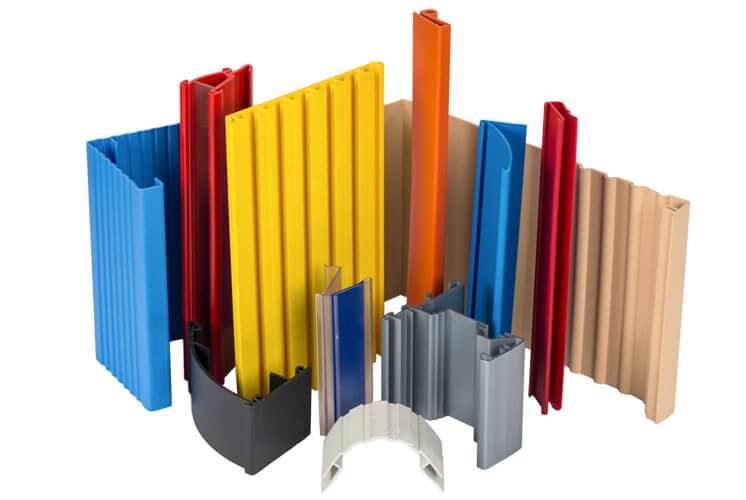
Low Volume Aluminum Extrusion Services
Aluminum Extrusion Services
Customization
Low Volume
Fast Delivery
Custom Low Volume Extrusion Services
Plastic Extrusion
Aluminum Extrusion


What is Aluminum Extrusion?
Aluminum extrusion is the process of shaping aluminum material by forcing it to flow through a shaped opening in a die. When extruded in this way, the aluminum material comes out of the die as an elongated piece with a continuous cross-sectional profile, and this profile can be highly complex and detailed. For non-specialists, an easy explanation of extrusion is to think about how pasta shapes or Play-Doh are made. In both cases, dough is fed into a chamber, pressure is applied by turning a crank or handle, and strands of the stuff are squeezed out of a small hole. Changing the attachment for this hole affects the cross-section of the strands, giving you the choice between e.g. tagliatelle, penne, or something else.
Of course, aluminum billets aren’t quite as malleable as pasta dough, so the aluminum extrusion process requires a lot of force — typically via huge amounts of hydraulic pressure — and, in some cases, the application of heat.
How Does Aluminum Extrusion Work?

To extrude aluminum via the hot extrusion process, aluminum billets must first be cut to an appropriate size. They are then heated in an oven to a temperature between 300 °C and 600 °C, making the metal supple but not liquid.
When the cut aluminum billets are heated, a ram powered by hydraulic pressure forces them into the die, which may have a standard aperture (i.e. a round or square hole) or a custom-made profile. A huge amount of pressure — around 10,000,000 pounds — is required to force the heated aluminum through the die.
The extrusions are then cooled on a cooling table, before being cut into lengths according to the customer’s demands. Heat treatment can also be applied to harden the aluminum.
Common Extrusion Applications
Standard Aluminum Extrusion Profiles

Standard profiles include:
- Circular bar
- Square tube
- T-shape
- F-shape
- Square bar
- L-shape
- C-shape
- Circular tube
- U-shape
- J-shape
Thermosets
- 2020 aluminum extrusion (20 mm x 20 mm)
- 80/20 aluminum extrusion (T-slot aluminum extrusion)
- 2040 aluminum extrusion (20 mm x 40 mm)
- 3030 aluminum extrusion (30 mm x 30 mm)
Custom Aluminum Extrusion Profiles
Standard aluminum extrusion profiles (like extruded aluminum channel or extruded aluminum bar) are typically mass manufactured by extrusion specialists; if you need large quantities ofp standard extruded aluminum profiles, you are better off using the services of one of these companies.
However, for custom aluminum extrusion profiles with a nonstandard aluminum extruded shape, 3ERP may be a better option. That’s because we accept low-volume extrusion orders — for prototyping and small batch production — allowing you to experiment with custom profiles.
In addition to creating custom aluminum extrusion profiles using custom dies, we can combine extrusion with other manufacturing processes (like CNC machining) to produce custom final parts. This can allow us to make parts faster and more affordably, especially if the majority of the part has a consistent cross-section.
Example operations:



Finishing Options for Aluminum
Extrusions
Aluminum extrusion is used to mass produce lots of non-cosmetic parts like tubing and frames, where finishing may not be especially important. However, custom aluminum extrusion is also used to produce high-value products which may benefits from the addition of color, text, logos, and other finishing procedures.
Suitable surface finishing procedures for aluminum extrusion include:
Basic mechanical finishing
Anodization
Painting
Powder coating
Silk-screen printing
Laser engraving
Applications of Aluminum Extrusion

Industrial
Construction
Electrical
Transport
Aluminum & Plastic Extrusion FAQs
You may specify a different aluminum alloy, and we will review the feasibility when providing you with a quotation.
into production today




